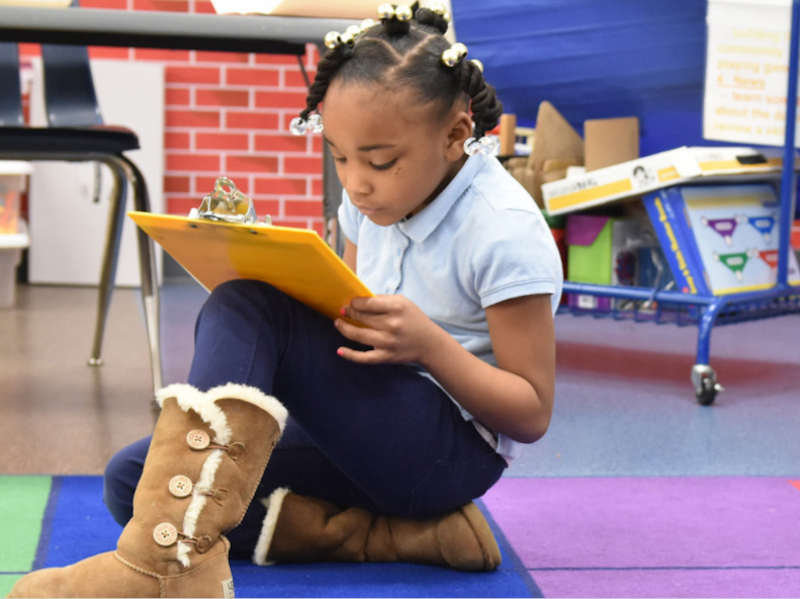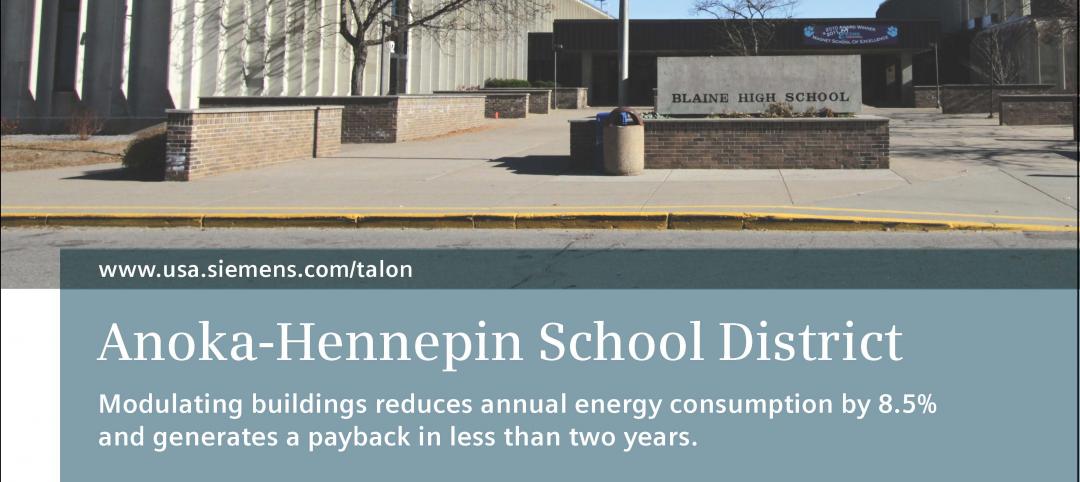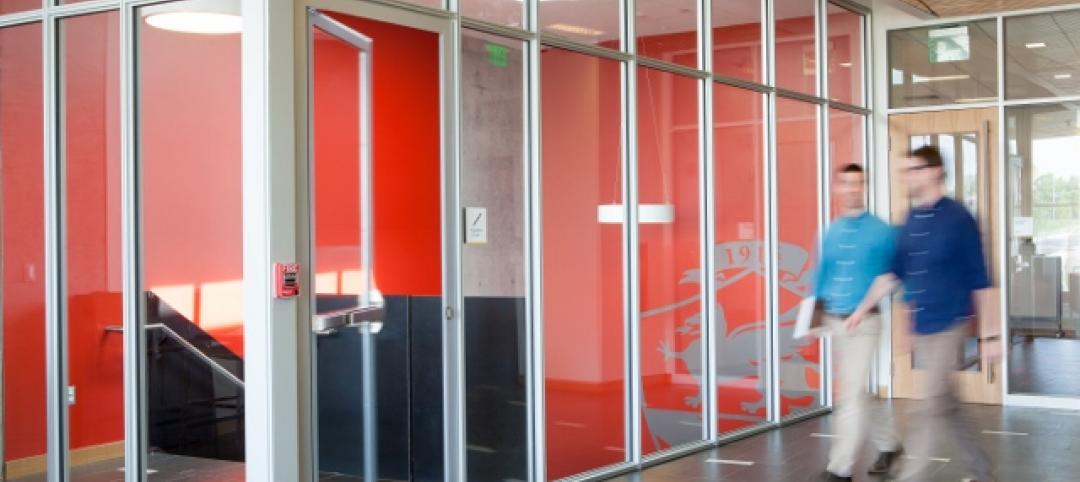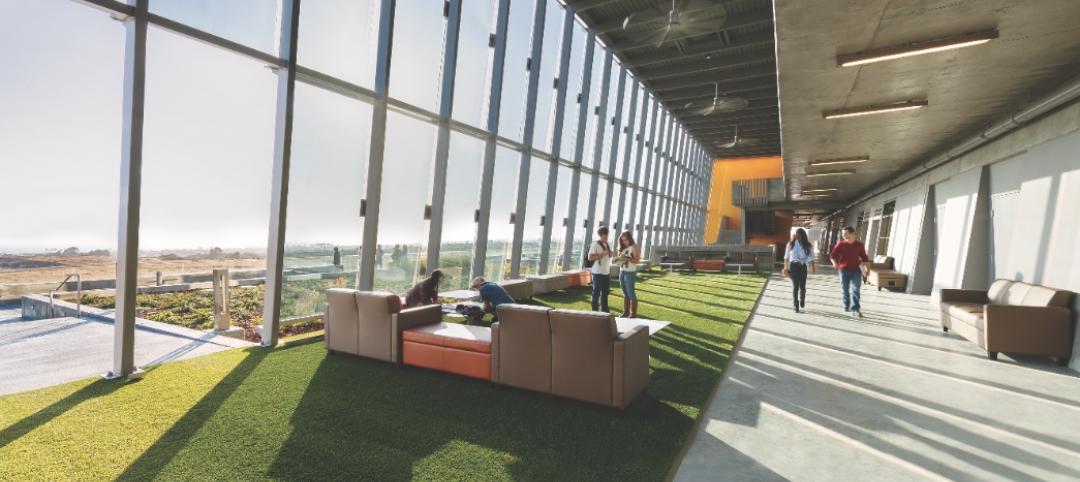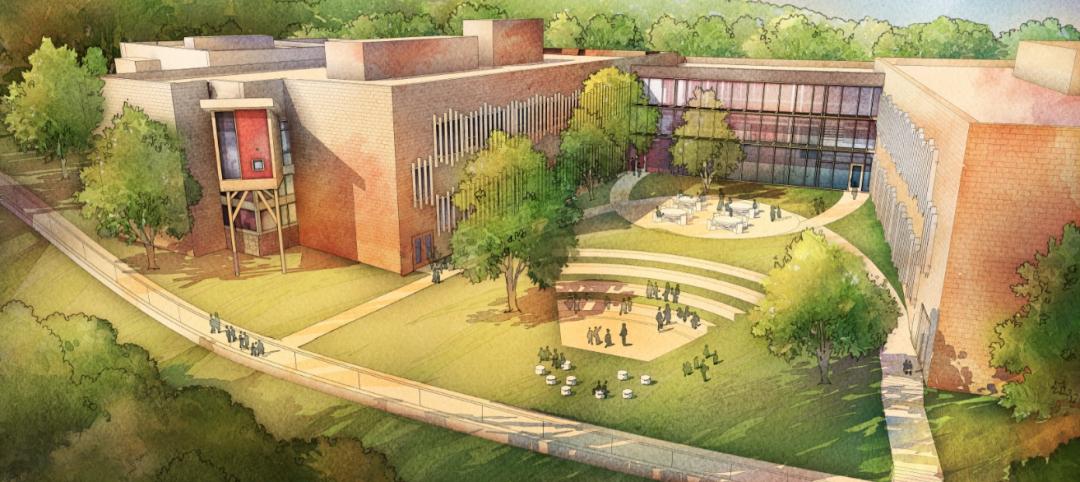It has been estimated that more than half of U.S. public schools need renovations or modernizations to be considered in good overall condition. The cost of bringing those schools up to par, though, could total nearly $200 billion.
Cash-strapped school districts that don’t have the funds to fix everything are searching for answers about where infrastructure improvements will have the greatest positive impact on students’ ability to learn and faculty’s ability to teach.
Earlier this year, Perkins Eastman partnered with the District of Columbia Public Schools on a study, cosponsored by J+J Flooring, to quantify the District’s modernization efforts. Since 2007, the District of Columbia Public Schools has invested more than $3 billion in school modernizations and improvements. Over the next six years, the District is committed to invest over $1 billion as part of its Capital Improvement Plan to modernize more school facilities.
During four consecutive weeks in February 2018, the Perkins Eastman study evaluated the level of satisfaction with Indoor Environmental Quality (IEQ)—daylight, thermal comfort, acoustics, and air quality—among occupants of nine elementary and middle public schools in the District: four that have been modernized within the last decade, and five that have had only minor improvements in the last 30 years.
The study intentionally excluded newly construction schools, and focused on younger students who are more vulnerable to environmental impacts because of their continued physical development and elevated respiratory rates.
Based on responses from four separate occupant questionnaires (whose response rate was 62% for students, 76% for faculty); on-site IEQ data collection using sensors, and school archival data on social influences, the paper reports that, in almost all IEQ factors, modernized schools saw improvements in both measured conditions and occupants’ satisfaction over non-modernized schools.
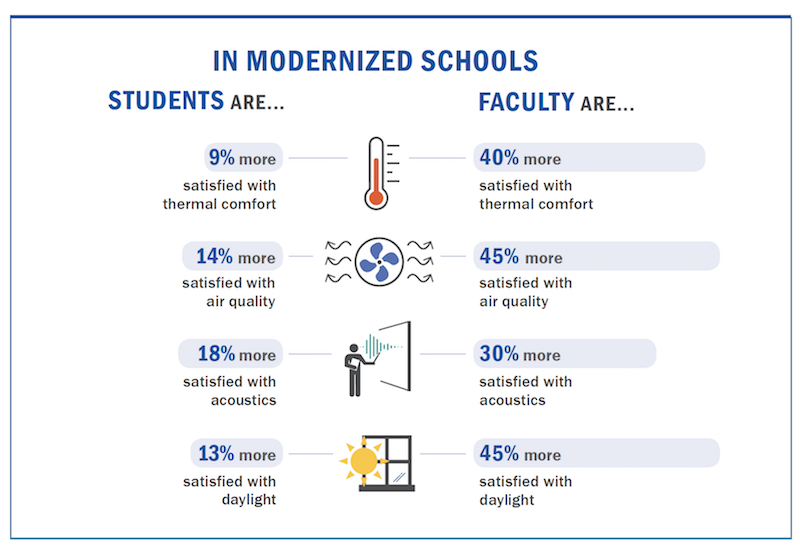
Perkins Eastman questioned students from Kindergarten to through 8th Grade, as well as faculty, and found significantly higher satisfaction levels with indoor environmental quality in modernized schools. Image: Perkins Eastman
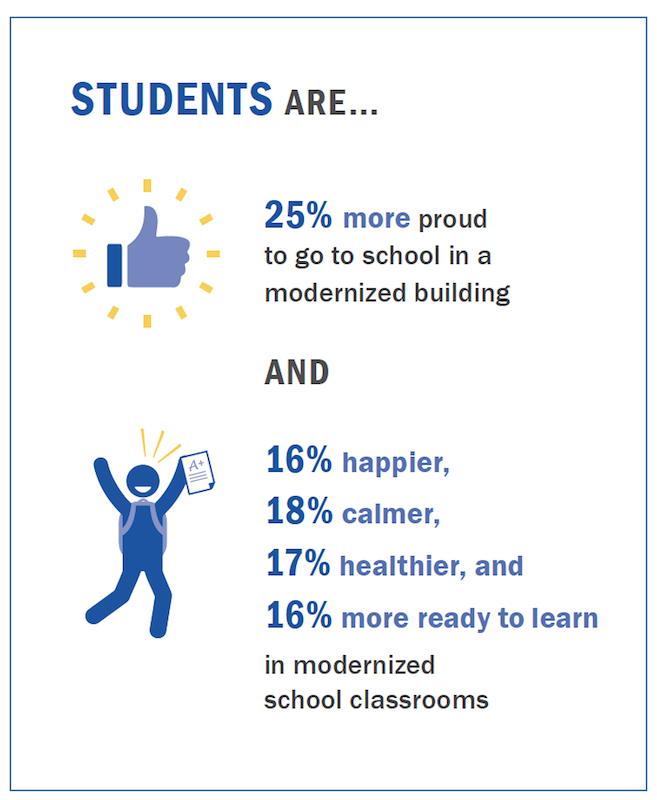
Not surprisingly, daylight figures prominently on occupants’ satisfaction ratings. Various past surveys have found that students in classrooms with windows perform 20% faster on math tests and 26% faster on reading tests than students in windowless classroom.
For the Perkins Eastman study, two measures of daylight quality were examined in each room in both the morning and the afternoon: First, how well the daylight gets distributed throughout the entire classroom was studied using a light meter; and, second, the presence of glare or overlit conditions within classrooms was analyzed using calibrated cameras.
The results showed that the evaluated schools were generally more likely to be underlit (35%) than overlit (5%). However, schools across the study were well lit on average, with about 60% of the studied floor area meeting but not exceeding the LEED requirements for daylight autonomy and glare. The evaluated modernized schools were found to have marginally more well-lit areas than non-modernized schools
To evaluate the impact of acoustics, the study used a decibel meter to measure ambient noise levels over time. Readings showed that sound levels were 11% lower in modernized schools than in non-modernized ones. These readings likely indicate that modernizations lead to lower background noise levels due to improvements made to the mechanical systems and the building envelope to prevent infiltration of exterior noise.
However, when studying noise levels in occupied classrooms, the results showed high levels in all schools studied, regardless of whether they were recently modernized or not. These data reflect the dissatisfaction in the questionnaire responses that was found across the board with acoustics, and might indicate an issue that needs to be better addressed in modernization projects.

The amount of light in classrooms has a measurable impact on occupants' perceptions of their environment and ability to learn. Image: Perkins Eastman
To assess air quality, the study used a CO2 sensor to measure the effectiveness of ventilation. In the modernized schools, the results indicate that the median CO2 levels when occupied were 25% lower than in non-modernized schools.
The data show that modernized schools, on average, hit peak CO2 levels that were 41% lower than peak levels found in the non-modernized schools. This finding further reinforces the fact that modernized schools have improvements in ventilation effectiveness within classrooms, leading to better air quality for both students and teachers.
Lastly, this study used sensors and thermal cameras to track two aspects impacting thermal comfort: temperature of the classroom environments and thermal bridging of the building envelope. Temperatures within the evaluated modernized schools fell within ASHRAE’s comfort zone range of 68 to 75 degrees F 84% of the time. Non-modernized school fell within that range only 42% of the time
The peak temperatures of modernized schools were 4 degrees F lower than non-modernized schools, which the study found were overheated during winter months, peaking at 81 degrees F. “The non-modernized buildings may have less ability to control or deliver the appropriate amount of heat to an individual classroom space, resulting in overheating during the winter,” the paper suggests.
Related Stories
Sponsored | Energy Efficiency | Jan 23, 2015
Rapid payback and reduced consumption with modulating buildings
| Jan 2, 2015
Construction put in place enjoyed healthy gains in 2014
Construction consultant FMI foresees—with some caveats—continuing growth in the office, lodging, and manufacturing sectors. But funding uncertainties raise red flags in education and healthcare.
Sponsored | | Dec 30, 2014
First-class glass: Designing for fire safety in schools
As more students enter the school system each year, designing for fire safety in educational facilities has never been more critical. Fire-rated glazing can be a key part of the solution.
| Dec 28, 2014
AIA course: Enhancing interior comfort while improving overall building efficacy
Providing more comfortable conditions to building occupants has become a top priority in today’s interior designs. This course is worth 1.0 AIA LU/HSW.
| Dec 2, 2014
Nonresidential construction spending rebounds in October
This month's increase in nonresidential construction spending is far more consistent with the anecdotal information floating around the industry, says ABC's Chief Economist Anirban Basu.
Sponsored | | Nov 26, 2014
What’s in a coating?
A beautiful coating on metal products can make a strong statement, whether used on a high-end commercial project or an industrial building. SPONSORED CONTENT
| Nov 17, 2014
Nearly two years after Sandy Hook, the bloodshed continues
It’s been almost two years since 20 first-graders were shot and killed at Sandy Hook Elementary School in Newtown, Conn., but these incidents, both planned and random, keep occurring, writes BD+C's Robert Cassidy.
K-12 Schools | Nov 6, 2014
New Sandy Hook school features could influence security standards
The design of the new Sandy Hook Elementary School on the site of the 2012 Newtown, Conn., school shooting features enhanced security measures—some subtle and others more prominent.
| Nov 3, 2014
ASSA ABLOY announces sponsorship of Safe and Sound Initiative
ASSA ABLOY, the global leader in door opening solutions, has signed on as a platinum sponsor of Safe and Sound, an organization founded by families directly affected by the December 14, 2012 tragedy at Sandy Hook Elementary School.
Sponsored | | Oct 29, 2014
Historic Washington elementary school incorporates modular design
More and more architects and designers are leveraging modern modular building techniques for expansion projects planned on historical sites. SPONSORED CONTENT


